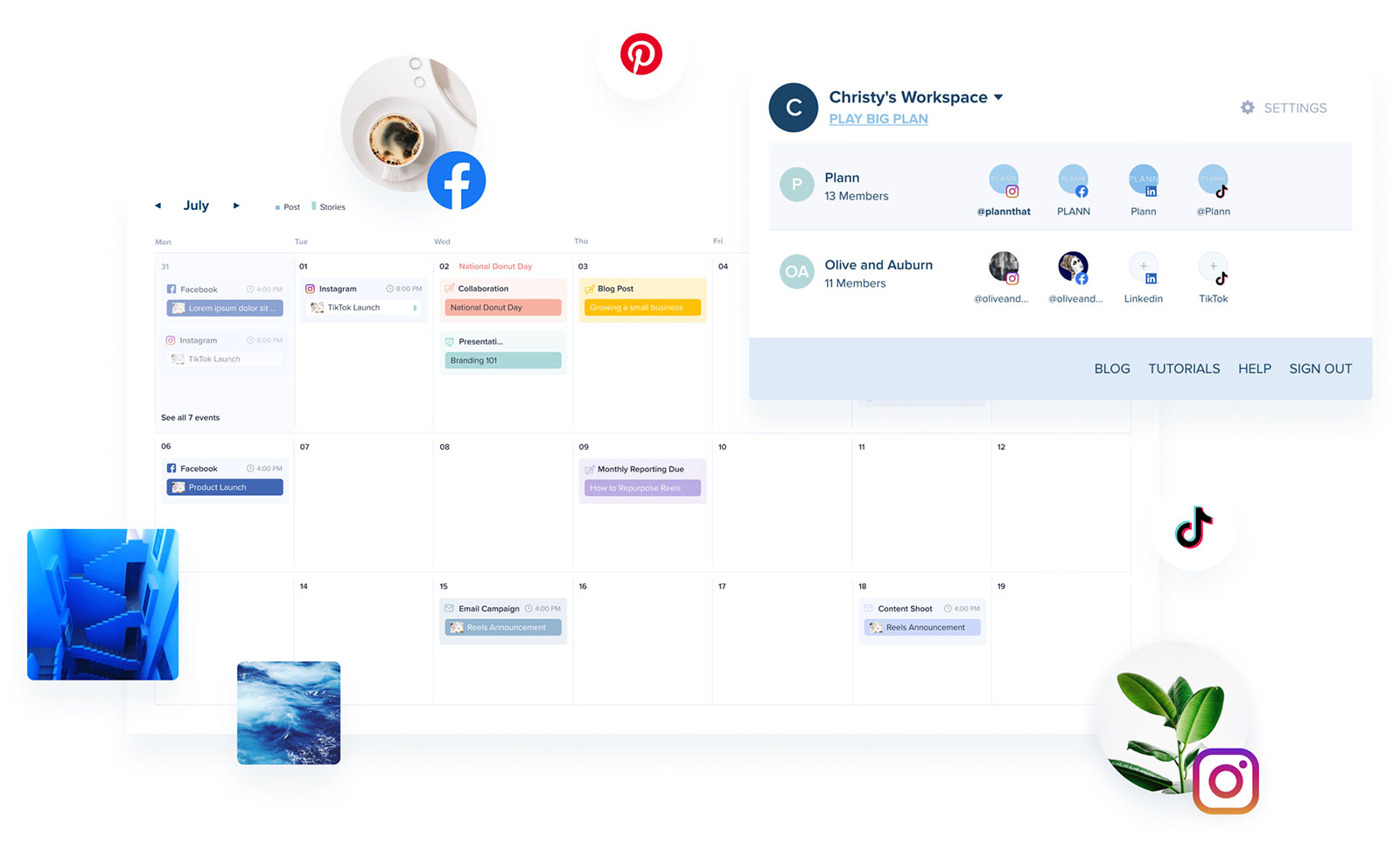The social media manager is a Renaissance man. A creative soul that keeps up with what happens in the world and at the same time isn’t scared of numbers. Planning, skill improvement, experimenting, and keeping an eye on trends, that’s what working with social media is all about.

The job objective of a social media manager is colorful. They have to keep learning. They are creative but know how to work with numbers.
Here’s what you would and should do as a social media manager.
Table of contents:
1. Don’t Underestimate Introduction
2. Profile Audit as a Cornerstone
3. Strategy, Take the Helm
4. Content Calendar
5. Create!
6. Publishing Schedule
7. Ideal Publishing Frequency
8. Both Sides Must Be Present
9. Trends and Competitors
10. Keeping an Eye on Performance
11. Tools
My Calendar
Even Creative People Need Time to Sit Around and Do Nothing
1. Don’t Underestimate Introduction
Before managing the company’s social media, get to know the brand first. Who created it? What are its values? And what does it offer?
It is also vital to understand the product. Its benefits, what issues it solves, how different it is from the competitor’s product and why it is exceptional.
After you get to know the brand and its product, you are going to be introduced to their target audience. Those are clients and potential customers.
It is simple. If you don’t know who you are talking to, how can you know what to say?
If you don’t get the information about the target audience right from the company’s management, analyze it on their already active social media profiles.
If they don’t have any yet, be ready to experiment in the beginning.
2. Profile Audit as a Cornerstone
To get to know the target audience more closely, check the posts on the company’s social media as well as its analyses.
Thanks to this, you will get in the groove. And find out what type of content worked or didn’t work. And therefore, know what your future steps should be.
Focus on the media attached to the posts, too.
Which type is the most popular? Photos, videos, or links to websites or blogs?
3. Strategy, Take the Helm
Social media strategy is a relatively extensive document.
It will help you to reach the company’s social media goals.
The strategy should consist of:
- Basic information about the company
- Goals
- Social media profile analysis: Statistics and SWOT analysis.
- Information about the target audience: Demography, interests, behavior, and needs.
- Competitor analysis: List of competitors, analysis of their activity on social media, and anything you could get inspired by.
- Content strategy: Topics you will write about, tone of voice, style of communication with your audience, and publishing frequency.
- Campaign plan: List of future campaigns, dates of launch, goals, and results.
- Measuring success: Metrics (engagement rate, reach, conversions), tools used for measuring success, reporting frequency (monthly, quarterly).
- Budget: Total budget which is then shared.
- Internal cooperation: What teams do you work with and how do you communicate with them (including communication channels as well as face-to-face meetings).
- Revision of the strategy: Decide how often you will make revisions of your strategy and subsequent edits of it.
- Documents enclosed and notes
4. Content Calendar
To not get lost…
Managing social media is about sharing lots of content. Several posts a day. And then taking care of all of these.
It is very easy to forget about something or to get lost in the amount of content to be finalized. That’s why planning is so important for every manager.
Create your own social media calendar or download a template that will suit your needs.
Also, it is vital for you to adjust the content to every platform you’re active on. Why? Because each of them supports a slightly different format of posts.
Don’t forget to include your future campaigns in the content calendar as well to count on them.

5. Create!
It is not a rocket science to create a good post. At least not for those managers, who know their followers well, are great copywriters, and know what a post should consist of.
In your perfect and to be a popular post, you should:
- Be clear and concise with the message - There’s a rule: The first sentence should prepare the floor and express the main thought.
- Make sure it’s error-free and doesn’t include any grammatical mistakes.
- Communicate with the tone your audience is used to - This is vital. You want to create a safe and friendly space.
- Give the audience what they need, want, and search for – Product details, information about new launches, and educational content.
- Stay loyal to the brand concept – Be consistent in conveying the brand message in all your posts.
- Be human - Communicate emotions and be empathetic. Emotions sell.
You want people to feel something when they read your post. You want your post to move them. And that’s when emotions come into play.
Be careful though, negative emotions and connotations are quite thin ice. To make sure your post will have an impact, stay on the positive side. Motivated and sound nice. What works nicely and is a good example is making your audience imagine certain situations.
6. Publishing Schedule
Rely on the data from analytics to make sure you achieve a big reach.
And publish your posts in the hours your followers are the most active.
If you manage foreign accounts as well, count with the time differences caused by the time zones.
7. Ideal Publishing Frequency
There’s a different ideal publishing frequency for each platform.
Facebook: 1-2 posts a day.
Instagram: 2-3 posts a day.
TikTok: 1-3 posts a day.
I covered the best posting frequency as well as practices for building a business on social media in my article How to Build a Business on Social Media in 2024.
8. Both Sides Must Be Present
Without dialogue, there can’t be a strong relationship.
That means that without staying in touch with your audience via comments sections, you can’t actually be close to them.
Neither can you improve your approach towards the creation of posts or help the company to offer better products.
Reply to comments. Be friendly. Show your followers you care about them, and value their opinions.
Also, I recommend being part of online discussions. You can find interesting information there. And you have an opportunity to help the brand to be heard and understood.

9. Trends and Competitors
You must know about the current trends if you don’t want to get drowned. And if there is a possibility it could be beneficial for the company, you should also adjust to them.
Experimenting is another topic here.
Don’t be afraid to experiment. It can help you to find out new ways to create content. And what your audience finds interest in. But always follow your numbers in analytics first.
And when it comes to competitors, it’s best to analyze their behavior on social media. And check what works for them - because it might for you, too.
10. Keeping an Eye on Performance
With KPIs, you can decide what you will focus on.
The most kept an eye on are reach, engagement rate (likes, comments), conversion, and visits.
The majority of the companies are going to be interested primarily in the conversion. This means they will regularly check how many followers bought their product.
However, the rest of the KPIs often go hand in hand with conversion.
Which ones will be the most important to you always depends on your goals.
For example, if your goal will be to increase brand awareness, you are probably going to be interested the most in the reach. And if your goal is to find out what people think of your product and would like to know how to improve it based on their reviews in the comments, you will want to know what your engagement rate is. And what are your followers' reactions.
And now the question that gives managers and influencers headaches:
Is a post that doesn’t get lots of likes and comments bad?
Alright. Let me tell you this.
You don’t have to stress too much about this one. More important here is how many people saw it. And how many conversions it brought. If you see an increase in the number of sales over time, then you might consider your posts successful.
How to make sure your post has a reach? The best way here is its promotion. For example, on Facebook, you can promote your post for quite cheap prices.
11. Tools
There are many tools that will help you with social media management and planning.
Semrush offers everything you’ll need. From planning your posts to spying on your competitors.
Other popular tools are Buffer, Hootsuite, and Google Analytics.
My Calendar
As a manager, you’ll have a thousand things on your mind. Plans, must-dos, and ideas.

That’s why it’s good to put all of these somewhere. Why? So, you don’t forget about it, and leave some space for creativity.
Apps such as Notes or Calendar which are synced with all your devices will be a big help.
Personally, I love shared Calendar. Thanks to it, I always know what to do the following hour, day, or week. I’m not that stressed about my schedule. And I have much more space for creativity.
Even Creative People Need Time to Sit Around and Do Nothing
Creativity isn’t a routine type of thing.
This state comes and goes. And you have to make the most of it when it’s here.
There will be more and less fruitful days for you as a creative person.
Sometimes, an idea will come to you out of nowhere. And you will have the post ready within 15 minutes.
Other times you can struggle hard not knowing how to begin a sentence.
In such lowlands, you can decide whether to:
- Wait for it to ripen – Have a break and return to the post later.
- Create the post according to time-proven marketing methods – There are so many of these. And one of them is imagination. Take your readers to the space where they already experience what you write about.
You can also get inspired by copywriting frameworks. But keep in mind that copy for ads and social media is not the same thing. It differs a bit. It doesn't sell so conspicuously. And rather than just giving the message out there, it opens space for discussion.
You can use AI for inspiration and to improve your skills, too. It can become your personal virtual coach.
If you doublecheck the results chatbots give you, it can be of good help even for social media managers.











